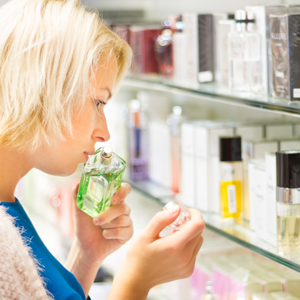
2013-12-20 10:41:01
Online Exclusive: Strong Growth Anticipated in Cosmetics Industry
2013-12-20 10:41:01
By Jamie Matusow, Editor
 Sales figures show the market for cosmetics and fragrances is strong. |
While industry revenue for cosmetics and beauty sales in North America has fallen 2.4% in the past year, the good news, according to IBISWorld, Inc., research analyst Jocelyn Phillips, is that the market for cosmetics—including fragrance, color cosmetics, personal care, hair care and deodorants—is expected to be worth $48.5 billion in 2013.
In an exclusive interview, Phillips tells Beauty Packaging, while slowing economic conditions caused a downturn, “the industry hasn’t been hit as hard as some others, due to a diversification of product lines”—for instance, mass brands that focus on staple goods such as shampoo, in addition to prestige goods from manufacturers such as The Estée Lauder Companies.
Prestige Holds Its Own
Prestige has managed to hold its own throughout shaky times, and now that unemployment is falling and housing prices are rising, its future looks brighter than ever, according to Phillips. “As soon as consumer confidence rises, prestige is the first to benefit, as consumers are no longer looking to downgrade on their purchases.”
The trend toward recovery in the cosmetics industry is expected to continue over the next five years, according to Phillips, who says that IBISWorld research points to an anticipated 5.8% annual growth, set to reach $64.3 billion by 2018.
Some brands have been banking on the turnaround and are well prepared for the changes that consumer confidence brings—as well as the desires of consumers in the rising middle class in emerging markets. Companies such as Lauder, says Phillips, have prepared for this growth by investing in new product development, such as skin tone illuminators and anti-aging products.
Lauder may be unique in holding to its prestige vision as well. Phillips advises that one key to market success right now is diversification: offering ranges from lower-priced cosmetic goods to more prestige brands. “The more they can buffer, the better,” says Phillips.
Color cosmetics, according to research from IBISWorld, accounts for 18% of total cosmetic sales in North America.
While IBISWorld’s research looks only at North America, Phillips says that exports (and imports) each account for 15% of total industry revenue, a figure that’s expected to climb over the next five years. Here, too, Lauder’s focus on emerging markets is well received by consumers in those regions looking to purchase luxury goods.
Eco-Friendly Trend on the Rise
What can we expect in terms of boosting cosmetic industry sales in the future?
Phillips says that eco-friendly ingredients—and packaging—are figuring into the equation. “Organic and environmentally focused products have been doing well over the past five years, and will continue to do so. “The biggest trend we see is in environmentally friendly packaging. There’s been an increased demand for a lower carbon footprint in packaging,” says Phillips.
Another prediction on Phillips’ part: “Over the next five years, as profit margins increase, we may see companies start to take packaging in-house, rather than externalize production.” For example, if a brand manufacturer is looking to embrace eco-friendly packaging, they may view this as an opportunity to increase profits by bringing manufacturing in-house.
Looking ahead to the big picture leading up to 2018: “We’ll see growth across all segments continue to drive innovation,” says Phillips.
LinkedIn




